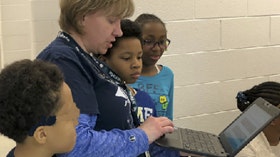Homepage
•
Learning Library
•
Blog
•
Make time for innovation despite curricular demands
Expand breadcrumbs
Expand breadcrumbs
- Learning Library
- Blog
- Make time for innovation despite curricular demands
- Homepage
- •
- Learning Library
- •
- Blog
- •
- Make time for innovation despite curricular demands
Make time for innovation despite curricular demands
By Kara Clayton
November 15, 2018








